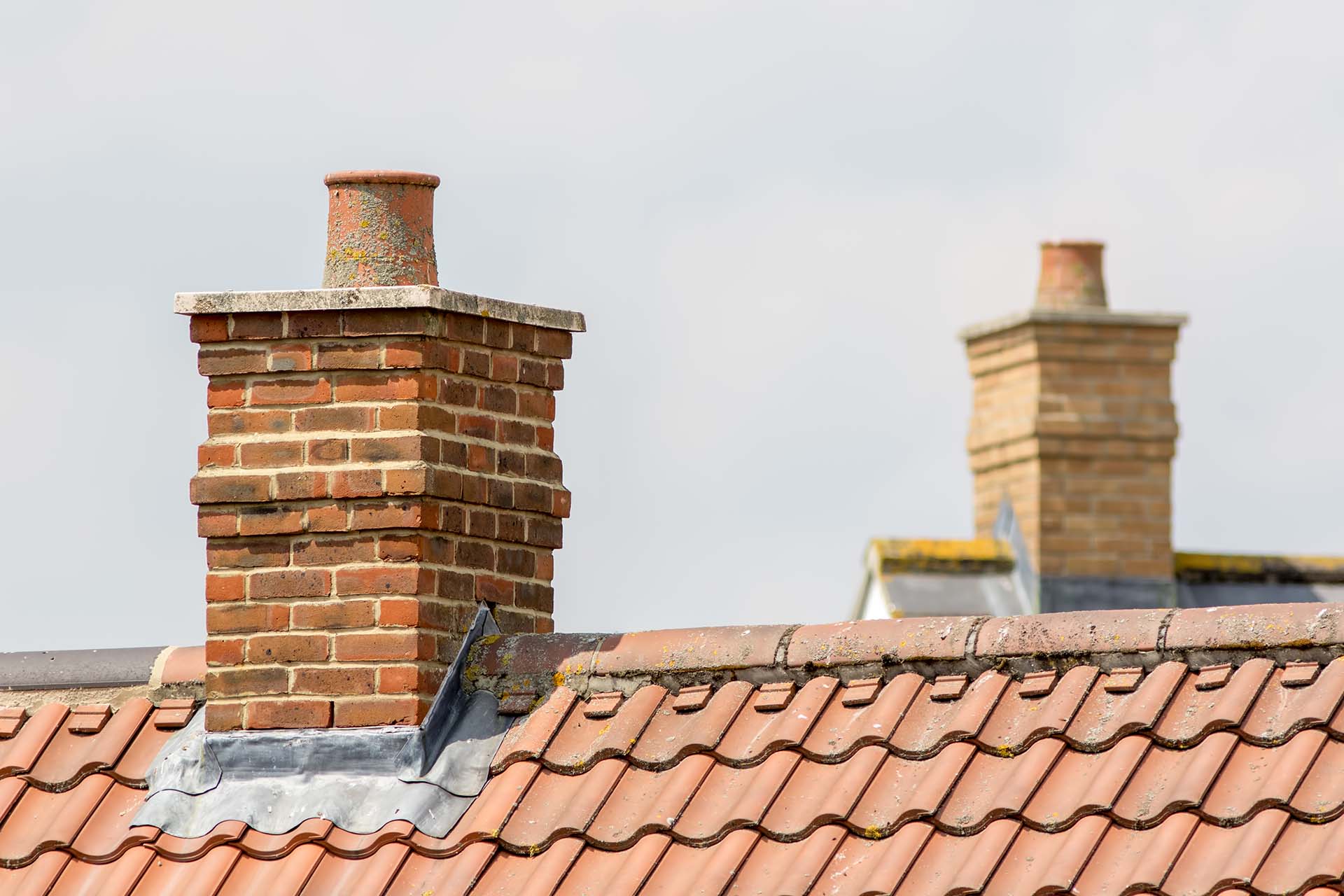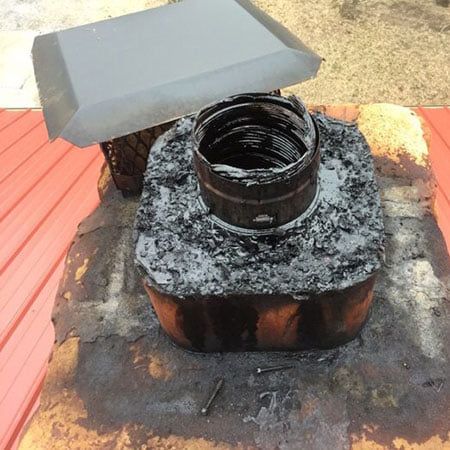Are you wondering what keeps your chimney leak-free or what is placed around a chimney to prevent leaks? Well, you’re in the right place! In this article, we’ll explore what is placed around a chimney to prevent leaks.
We’ll cover the different types of roof flashing, the importance of proper chimney maintenance, and common causes of chimney leaks.
Stay tuned to find out how you can keep your chimney in top shape and avoid those pesky leaks!
Key Takeaways
- The types of roof flashing commonly used around a chimney include aluminum, copper, and galvanized steel.
- Proper chimney maintenance, including regular inspections and repairs, is crucial to prevent leaks and extend the lifespan of the roof.
- Common causes of chimney leaks include damaged flashing, missing chimney caps, and cracks or damage to the chimney crown.
- Solutions for preventing chimney leaks include repairing or replacing damaged chimney caps and flashing, promptly addressing cracks in the chimney crown, and ensuring proper installation and sealing of flashing.
What is Placed Around a Chimney to Prevent Leaks
Flashing is placed around a chimney to prevent leaks and water damage. There are different types of flashing, including step flashing, counter flashing, and continuous flashing.
Step flashing is installed along the sides of the chimney, while counter flashing is placed on top of the step flashing for extra protection. Continuous flashing is a single piece of metal that wraps around the entire chimney.
Proper installation and sealing of the flashing is crucial to prevent leaks. If you notice any signs of a leak, address the issue promptly by repairing or replacing the damaged flashing. Chimney waterproofing with a sealant is also recommended to prevent water penetration.
Regular maintenance and inspections of the flashing and chimney are important to detect and address any damage or wear. By following these steps, you can keep your chimney watertight and protected against leaks.
Types of Roof Flashing for a Chimney
To prevent leaks and water damage, it’s important to choose the right roof flashing for your chimney. There are various materials available, such as aluminum, copper, and galvanized steel.
Aluminum is lightweight and resistant to corrosion, while copper is durable and adds an aesthetic appeal. Galvanized steel is affordable but may not last as long. Proper installation is crucial to avoid water seepage, so consult a professional for correct and secure installation.
Hiring a professional for chimney flashing offers benefits like expertise in material selection and proper installation to reduce the risk of leaks. Promptly repairing damaged flashing can prevent further water damage.
Regular chimney inspections can identify potential issues early and prevent costly repairs in the future.
Importance of Proper Chimney Maintenance
Proper chimney maintenance is crucial for preventing leaks and ensuring your roof’s longevity. Regular inspections help identify and address chimney issues early, preventing larger and costlier problems.
Inspections also ensure proper installation of flashing, which prevents water damage. Proper chimney maintenance extends your roof’s lifespan and protects your home from costly repairs.
Invest in regular maintenance to save money and safeguard your home.
Causes of a Chimney Leak
Check for damaged flashing or a missing chimney cap, as these are common causes of chimney leaks. Regularly inspect and repair any damaged flashing to prevent water damage.
Install a chimney cap to prevent water, wildlife, and debris from entering the chimney.
Inspect and repair any cracks or damage to the chimney crown to prevent water seepage.
Solutions for Chimney Leaks
To address chimney leaks, consider professional repairs or simple DIY solutions.
- Replace a damaged or missing chimney cap to prevent water, debris, and animals from entering.
- Repair or replace damaged chimney flashing immediately to prevent further water damage.
- Hire a professional for a roof inspection if necessary.
- Rebuild or repair eroded parts or a damaged crown promptly to avoid costly repairs in the future.
Lack of Chimney Cover
Install a chimney cover to prevent leaks and damage. Consider alternatives like chimney rain pans or top-sealing dampers. Chimney covers protect against water, animals, and debris, preventing costly repairs.
Install a chimney cover yourself with DIY kits and save on installation costs. Look for signs of a leaky chimney like water stains, musty smell, or visible dripping.
An uncapped chimney can result in blockage leading to poor chimney ventilation, leakages, water collecting from rain and snow, and unwanted birds and insects sheltering inside your chimney stack.
https://www.chim-chimneyinc.com/post/what-should-you-do-with-an-unused-chimney-1#:
Without a chimney cover, you may need repairs for damaged masonry, rusted liners, or water-damaged walls. Prevent leaks and costly repairs by having a chimney cover in place.
Damaged Chimney Crown or Chase Cover
To prevent leaks and damage, it’s important to promptly address a damaged chimney crown or chase cover. Cracks in the crown can let water seep in, causing structural damage and leaks.
A professional inspection is crucial to assess the extent of the damage and find the appropriate solution, which may include rebuilding eroded parts of the chimney. The crown or chase cover should be made of durable materials like concrete or metal, designed to withstand weather exposure. It’s customizable to fit specific chimney dimensions.
The benefits include preventing water penetration, protecting the chimney structure, and extending its lifespan. However, it requires professional inspection and repair, can be costly depending on the damage, and may require temporary closure of the chimney during repairs.
Worn Out Brick and Mortar Joints
Regularly inspect and maintain your chimney to prevent leaks from worn-out brick and mortar joints. Weather exposure and age can cause deterioration over time. Look for cracked or damaged bricks, deteriorated mortar joints, and water stains or dampness.
Schedule regular chimney inspections and hire a qualified mason to repair any damage. Apply a waterproofing sealant to protect against water damage.
Faulty Flashing
Inspect your chimney for signs of faulty flashing such as loose or missing pieces. Promptly repair any issues to prevent leaks.
Cracks in caulk or signs of rust or water damage on the flashing require immediate action. Replace damaged flashing with fresh caulking to maintain a watertight seal. Consider using durable and corrosion-resistant materials like aluminum or copper flashing. Replace steel flashing in older homes for better leak protection.
If you aren’t experienced, consult a professional for proper chimney flashing repairs.
Regularly inspect and repair chimney flashing to prevent costly water damage in the future.
Preventing Leaks
To prevent leaks around your chimney, it’s important to install flashing and crickets correctly. Regularly inspect the flashing for damage like cracks or gaps and promptly repair or replace it.
Applying a chimney sealant can improve waterproofing by creating a protective barrier. Check the sealant regularly and reapply as needed.
Conduct periodic inspections for signs of leaks such as water stains or musty odors. Promptly addressing leaks prevents further damage.
Consult a professional roofing contractor for installation, maintenance, or repair needs to ensure optimal results.
Frequently Asked Questions
What Are Some Signs That Indicate a Chimney Leak?
Water damage or mold growth near the chimney indicates a potential leak. It’s crucial to promptly address this issue by scheduling a professional inspection for necessary chimney repairs.
Can a Chimney Leak Cause Damage to Other Parts of the House?
A chimney leak can lead to structural damage, mold growth, insulation damage, electrical hazards, and poor indoor air quality. Addressing leaks promptly is crucial to prevent further harm to your house.
How Often Should Chimney Flashing Be Inspected and Replaced?
Chimney flashing should be inspected and replaced every 5-10 years to prevent leaks. Professionals should be hired for inspections to identify causes of leaks. Cost-effective repairs and long-term solutions are available.
Are There Any DIY Methods to Fix a Chimney Leak?
For DIY solutions or temporary fixes for a chimney leak, be aware of common mistakes. Seek professional repairs for long-term solutions.
Is It Possible to Prevent Chimney Leaks by Using Waterproofing Products?
Chimney leaks can be prevented using waterproofing products such as a moisture barrier, chimney flashing, and a waterproof sealant. These products help keep water out and prevent leaks.












One thought on “What Is Placed Around a Chimney to Prevent Leaks? Everything You Need to Know”